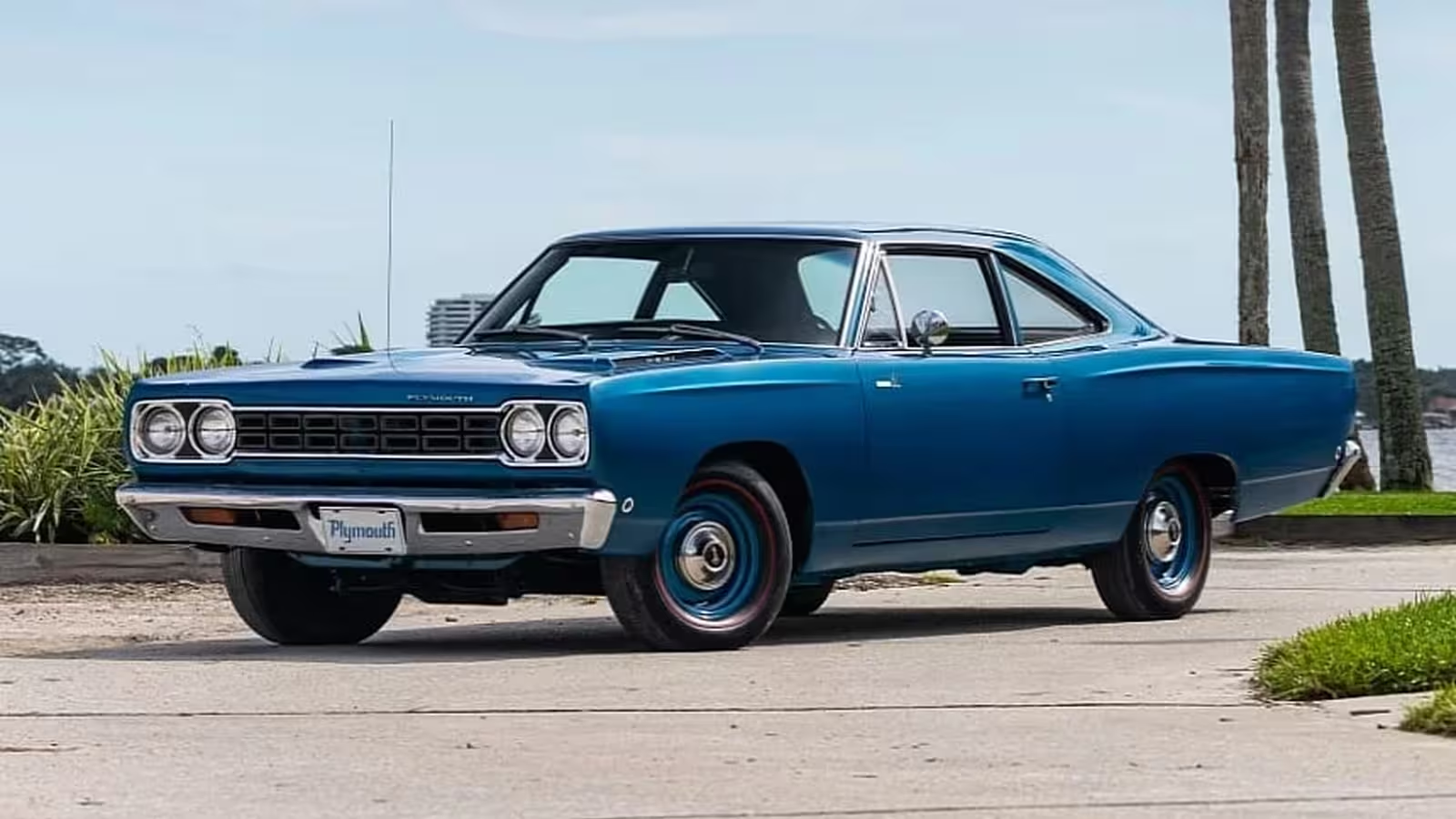6 Minutes
Introduction: The Legend of the 1968 Plymouth Road Runner Hemi
Few vehicles represent the golden age of American muscle cars as powerfully as the 1968 Plymouth Road Runner. Revered among Mopar enthusiasts, the Road Runner isn't just synonymous with brute horsepower—it's an automotive icon with a history and character all its own. Although its 426 Hemi V8 engine often steals the spotlight, there’s more to this classic coupe than just raw power. A puzzlingly low mileage, museum-grade provenance, and a bright future in the collector market ensure this Mopar legend’s enduring appeal.
Birth of a Muscle Car Icon
Unveiled in 1968, the Plymouth Road Runner was designed to put affordable performance within reach of the everyday driver. Yet, when equipped with the legendary 426-cubic-inch Hemi V8, the Road Runner entered a league above its peers. Out of every five B- and E-body Mopar muscle cars fitted with the 426 Hemi between 1966 and 1971, one was a Road Runner, cementing its status among Chrysler’s elite.
The Road Runner’s impact was immediate. At launch, it became the only model to surpass 1,000 Hemi-powered vehicles sold in a single year—a remarkable feat for any Mopar, let alone a new nameplate.
Auction History and Provenance
One particularly striking 1968 Road Runner recently claimed headlines after selling at McCormick’s Palm Springs Classic Car Auctions for $127,500. While this price might seem high, it reflects the car’s exceptional restoration, historical pedigree, and its time spent in Floyd Garrett's Muscle Car Museum—a revered institution among muscle car aficionados. Floyd Garrett’s endorsement signals a vehicle of notable rarity and careful preservation, and this Road Runner certainly fits the bill.
After the museum’s closure in October 2021, this car found new ownership—marking another chapter in its storied life. Previously, it had crossed the auction block at Mecum Kissimmee in 2019, where it received a high bid of $70,000 but remained unsold. This auction history underscores the surging interest and rising values of classic Hemi Mopars in today’s collector car market.
Ultra-Rare Specs and Restoration
Low Production, High Impact
Of the 1,019 Hemi-powered 1968 Road Runners produced, only 435 examples were paired with the desirable four-speed manual transmission. This particular car is one of this exclusive club, making it a true collector’s gem.
Rotisserie Restoration
The car boasts a meticulous two-year, nut-and-bolt rotisserie restoration, returning it to its former glory. Its eye-catching blue metallic paint highlights factory-correct details including a tachometer, drip-rail and body belt moldings, a left-hand remote mirror, and a period AM radio. Built on September 12, 1967, this example is an early “post coupe” model, featuring the B-pillar design that distinguishes it from later pillarless hardtops.
Performance and Engineering Highlights
At the heart of the 1968 Road Runner lies its most celebrated feature: the 426 Hemi V8. Developed for NASCAR dominance, this engine was notoriously underrated at 425 horsepower and an impressive 490 lb-ft of torque. Equipped with dual four-barrel carburetors and 10.25:1 compression, it remains a benchmark for classic muscle car performance.
Paired with the robust A833 four-speed manual transmission and a period-correct Dana 60 rear axle with a 3.54 gear ratio, this car delivers explosive acceleration and an unmistakable exhaust note that defines the muscle car experience.
Design - Purposeful, Yet Stylish
Plymouth’s design philosophy for the Road Runner focused on function first, shedding unnecessary luxuries in favor of pure performance. Yet, details like the bright metallic paint, aggressive stance, and signature "beep beep" horn set it apart from the crowd. The post coupe’s B-pillar design was later complimented by a pillarless hardtop, providing cleaner lines and a more open feel when the side windows were lowered.
Value, Collectibility, and Today’s Market
Plymouth originally positioned the Road Runner as the budget-friendly muscle car, but ordering the Hemi engine quickly transformed it into a premium performance machine. The Hemi option alone added $714 to the sticker price—a considerable sum in the late 1960s. Despite this, buyers snapped them up, with 1968 Road Runner sales totaling more than double the manufacturer’s ambitious goals.
Market trends highlight the Hemi Road Runner’s growing appeal among collectors. According to recent sales data, restored, numbers-matching examples from the 1968-1970 Road Runner Hemi lineup can command up to $166,000 at auction. Non-numbers-matching, but meticulously restored cars like this one often bring between $105,000 and $135,000, depending on provenance and restoration quality. The $127,500 sale in Palm Springs places this vehicle comfortably within the range for museum-quality, but non-all-original, Hemi Road Runners.
A Mileage Mystery
One fascinating aspect of this specific Road Runner is its reported 4,522 miles—an astonishingly low figure for a car over half a century old. This odometer reading, documented as of its 2022 private dealer sale, raises questions about its usage history, preservation, or restoration process. While its engine, transmission, and rear axle aren’t verified as numbers-matching, their period correctness adds to the overall value as a top-tier, driver-ready collector car.
Comparisons and the Road Runner’s Competition
In 1968, the Road Runner squared off against not only other Mopar legends like the GTX, but also a roster of potent muscle machines from Ford and Chevrolet. What set the Road Runner apart was its ability to combine raw, Hemi-powered performance with distinctive styling—and at a price point that resonated with young, performance-hungry buyers.
Most customers opted for the base 383 V8, delivering 335 horsepower and plenty of thrills. However, the Hemi option transformed the Road Runner into a genuine street and strip warrior—transcending its modest roots to become a symbol of unbridled American horsepower.
Enduring Allure of the 1968 Road Runner Hemi
From its initial debut to its current standing among high-value collector cars, the 1968 Plymouth Road Runner Hemi exemplifies all that’s exciting and desirable about classic American muscle. Whether as a prize-winning show car, a museum exhibit, or a once-in-a-lifetime auction find, the Hemi Road Runner continues to capture the imagination of car enthusiasts around the globe.
Curious readers and Mopar fans can catch an exclusive look at this spectacular example in video coverage by CARFINDER, filmed on site at the Palm Springs Auction—a fitting tribute to one of the most storied muscle cars ever to hit the road.
Source: autoevolution



Comments